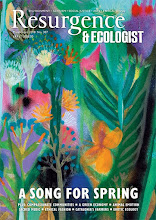They have wonderful plentiful clays in Australia, some of the best in the world. Particularly they have very white clays which are extremely plastic. This is unusual as to achieve whiteness potters have been known to incorporate all sorts of materials into the clay, most famously Josiah Wedgewood who used ground animal bones, hence bone china. And even in China where it is possible to achieve a wonderful translucent whiteness that comes at the expense of plasticity. The clay there is short, like short crust pastry, ie crumbly and very difficult to work.
Here in Australia however you can have both superb plasticity in clays which are sensual delights to use on the wheel, as well as a beautiful fired whiteness which takes colour well.
Since I got to know Noel Butler, a dynamic Aboriginal artist who came to Appledore for the Visual Arts Festival two years ago, I have become more interested in Aboriginal people, so I asked my Townsville hosts whether there were any indigenous people there. I had not seen any so far. I was told that it was very sad. There had been several different countries of Aboriginal people here, who each spoke different languages, and who had a history of animosity with each other.
Some time ago they were shipped off to Palm Island, about 30 miles off the coast, and there they remained. They fought each other, were depressed and often drunk, and it is not surprising. Australia still has not come to terms with its Aboriginal people, in spite of the fact that Quantas staff wear fabrics printed with an aboriginal artist’s painting. I know Noel well, I am going to visit him, and it hurts me to think that people like him are virtually imprisoned and devalued in their own land.
Noel is a great campaigner for Aboriginal culture. He lives Resurgence values. He runs a centre for delinquent boys and has them live in the bush, showing them how to survive on plants and available food. I will write more about him when I visit him, and have been planning for some time to write about him for Resurgence magazine. He also teaches a module on a university training course for Doctors, showing them the healing properties of plants. He is a truly remarkable man, and has survived a terrible childhood. It is absolutely shocking how he and his people were treated in the name of civilization by a white government, and I feel shame when I think about it. And it still goes on. Even here, where I am now on the great barrier reef on a coral island which is a green zone, there is a poster advertising a DVD about the coral reef which is called Coral Reef Dreaming. It seems white Australia is happy to appropriate the art, or what it thinks is the art, of Aboriginal people, while still keeping them down.
I am currently having a break on a coral island, called Lady Elliot Island, which is in a Green Zone. It is all protected. We are told on arrival not to walk on any living coral, not to touch any shellfish or living creature on the reef. I have been snorkelling this morning looking at turtles, manta rays, and beautiful colourful fish. Before I leave this eco-resort I will interview our young guide, who is very knowledgeable about the effects of climate change on the island. His name is Nick and he has done two degrees in Marine Biology and Marine Science.
Sandy Brown
is an internationally renowned ceramicist who lives and works in North Devon.
She is the Art Advisor at Resurgence magazine.
Find out
more about Sandy Brown





